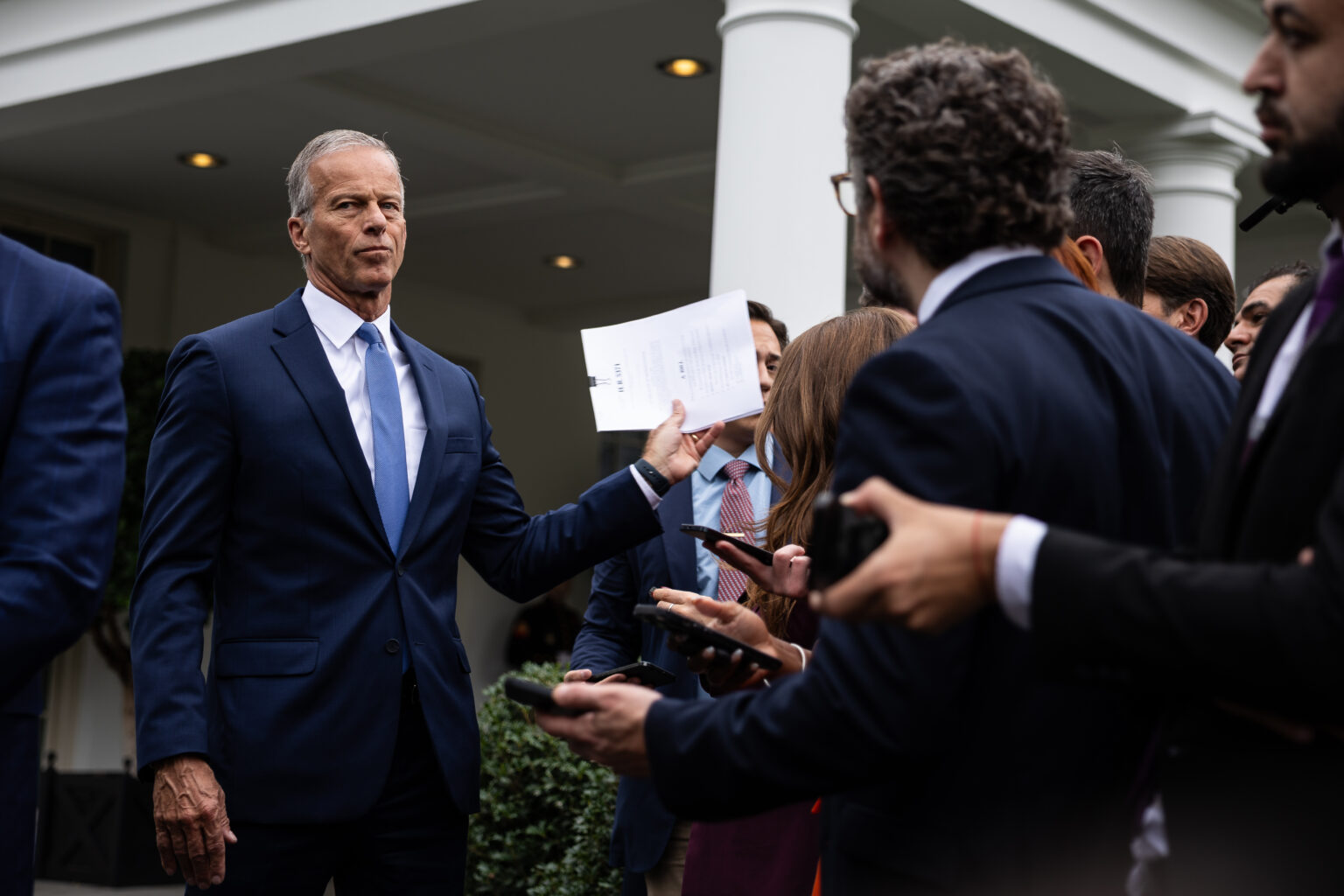The federal government shut down early Wednesday morning, setting up a potentially lengthy stand-off without a clear path forward to fund the government after top congressional leaders did not meet to try to find a last-minute deal in the hours before the shutdown.
Leaders from both parties braced for an imminent shutdown by casting blame on their opposite party one day after President Donald Trump initially signaled an openness to negotiating an extension of soon-to-expire health care subsidies in exchange for Democratic support on a funding bill — shortly before insulting Democratic leaders on social media.
The impasse means 750,000 federal employees could face furloughs, according to an estimate from the Congressional Budget Office. Some of those employees could be targets of the White House’s plan to permanently fire more federal employees, Trump and other administration officials warned.
“The last thing we want to do is shut it down, but a lot of good can come down from shutdowns,” Trump told reporters in the Oval Office, hours before the government funding lapsed. “We can get rid of a lot of things that we didn’t want, and they’d be Democrat things.”
The Office of Management and Budget formally directed agencies to begin shutting down their operations Tuesday evening, while accusing Democrats of adopting an “unteneble posture” that is “making the duration of the shutdown difficult to predict.”
No federal appropriations bills have been passed for the new fiscal year, which starts Oct. 1, marking the first full federal shutdown since 2013. In his first term, Trump oversaw three partial shutdowns, the longest stretching 35 days from December 2018 to January 2019.
Speaker Mike Johnson and Senate Majority Leader John Thune joined House Minority Leader Hakeem Jeffries and Senate Minority Leaders Chuck Schumer at the White House on Monday to meet with Trump, Vice President JD Vance and other White House officials. During the meeting, Trump expressed a willingness to discuss extending the Obamacare tax credits, a demand Democrats have made for their votes on a continuing resolution.
“I asked the Democrat representatives, ‘What do you think about coming up with a better health care?’” Trump told reporters on Tuesday.
Some Republicans have floated compromises, but insisted the government must be funded first. Vance told reporters after Monday’s meeting with Democratic leaders that any talks on health care subsidies would need to happen in the “context of an open government.”
On Tuesday, Johnson called the Democrats’ demand to extend Obamacare tax credits a “red herring.”
The distance grew further between the two sides after Trump posted an altered video featuring Jeffries wearing a fake mustache and sombrero while speaking alongside Schumer outside the White House — a heightening of Republicans’ line of attack that Democrats are withholding government funding to secure health care benefits for undocumented immigrants. The video contained fake audio of Schumer saying the only way for Democrats to get votes was to attract “illegal aliens.”
Jeffries slammed the video as “bigotry.” Trump then posted a second similar video Tuesday.
The GOP tactic fixates on a separate proposal from Democrats to roll back parts of the Republican-passed domestic policy agenda package, which includes restrictions on non-citizens from accessing federal benefits. Undocumented immigrants are ineligible for health care coverage through Affordable Care Act plans, and Democrats are looking to extend subsidies in exchange for votes to open the government.
Trump re-emphasized that in an interview with POLITICO on Monday, while also avoiding blame for the shutdown. Recent polling from PBS News/NPR/Marist has suggested voters are more likely to blame Republicans than Democrats for a shutdown, while a New York Times/Siena poll found most voters believed Democrats should not “shut down the government, even if their demands are not met.”
“I don’t worry about that,” Trump told POLITICO, “because people that are smart see what’s happening. The Democrats are deranged.”
The White House has said it will leverage the shutdown to further its restructuring of the federal government. A memo distributed by OMB to federal agencies requested they identify programs backed by discretionary funds so the White House can permanently eliminate those that do not align with Trump’s priorities.
The move would be an unprecedented handling of a government shutdown. Non-essential federal workers typically face temporary furloughs and are brought back to work once Congress restores federal funding.
The Senate failed to pass a Republican stopgap proposal and a Democratic funding bill Tuesday evening. The GOP proposal received votes from two Democrats — Pennsylvania Sen. John Fetterman, Nevada Sen. Catherine Cortez Masto — and independent Maine Sen. Angus King, who caucuses with Democrats. Republicans voted down the Democratic bill along party lines.
Thune told reporters after the vote he intends to continue scheduling regular votes on the short-term continuing resolution, hoping to pressure Senate Democrats to back the measure. He added that he doesn’t want to negotiate on health care subsidies while the government is shut down.
“We need to keep the government open, we can talk about whatever else they want to talk about after that,” he said Tuesday.
No talks are currently scheduled between congressional leaders.
Johnson has yet to call the House into session, indicating an agreement is yet to arrive soon. He said in a interview on CNN Tuesday evening he expects House Republicans to return to the Capitol next week.
Jeffries has said he plans to keep House Democrats in Washington for the remainder of the week.
“This is not simply a negotiating tactic,” Jeffries said in a CNN interview Monday evening. “We are ready to find a bipartisan agreement. But that bipartisan agreement needs to address the health care crisis that exists in the United States of America.”
Read the full article here


